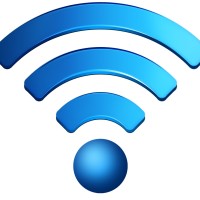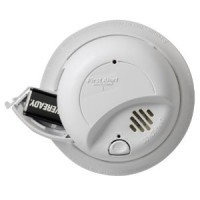To illustrate the ingredients that a fire needs to initiate, fire safety experts have developed the fire triangle model. This gives handy tips for preventing home fires and keeping you safe.

Fuel, oxygen and a source of ignition (heat) must be present for fire to exist. Once it has started, fire will produce a flame, smoke and heat.
Smoke is made up of gases such as carbon monoxide (CO), carbon dioxide (CO2) and soot (small particles). The byproducts of fire are useful to detect the presence of fire. Most fire detectors will use one or a combination of heat, smoke, carbon monoxide or carbon dioxide to sense fire.
Fire safety experts consider the fire triangle to be very significant for two reasons:
1. Fire Prevention – by keeping fuel, oxygen and heat apart, fire cannot start. And that is why we consider this as a very important fire safety tip at home.
2. Fire fighting – by removing any of the elements when the fire has started, the fire will go out. Fire fighting is done by either removing oxygen, e.g. by using some form of covering like powder or a gas that can displace oxygen like carbon dioxide.
Another great tip to remember at your finger tips is the different types of fires. Experts have further classified fire based on the fuel type:
What Do the Symbols on a Fire Extinguisher Indicate?
The symbols on a fire extinguisher help you quickly identify which types of fires it can tackle. Here’s a simple guide:
- Class A Symbol: Looks like a trash can with flames above it. This tells you the extinguisher is good for ordinary materials like wood, paper, and cloth.
- Class B Symbol: Depicts a gasoline can with a flame. It’s designed for flammable liquids such as gasoline, oil, and grease.
- Class C Symbol: Shows an electrical plug and outlet with a flame. This means it’s safe to use on electrical fires, and it won’t conduct electricity.
- Class D Symbol: Features a burning gear or metal. It’s meant for fires involving flammable metals like magnesium or titanium.
- Class K Symbol: Illustrated by a cooking pan on fire. This extinguisher is perfect for cooking oil and grease fires, especially in commercial kitchens.
Each symbol guides you to choose the right extinguisher quickly, ensuring effective and safe use during emergencies.
Table Summary For Classes of Fire
| Symbol on Fire Extinguisher | Meaning |
| Class A | Fire is based on solid materials such as paper, textiles and wood. |
| Class B | Fire is based on flammable liquids such as petrol, solvents and oil. |
| Class C | Fire is based on gases such as methane, acetylene and propane. Electrical fires are classified here too. |
| Class D | Fire is based on metals such as aluminum or magnesium. |
| Class F | Fire is based on high temperature fats and cooking oils. |
Fuels for Class A, B and F can easily be found at homes. Hence, great care should be taken when storing such materials. The best location is away from sources of ignition or flames of fire.

The classification also informs the type of fire extinguisher to be used to put out fire. Some of the fire extinguishers that are recommended for use at home can be found here. You should have one at least for your home, garage and car.
The common causes of fire are electrical equipment, deliberate ignition, hot work involving a naked flame, carelessly discarded smoking materials, cooking appliances, heating appliances, unsafe use and storage of flammable liquids and gases.
Practice Your Fire Emergency Escape Plan
Few people have actually implemented our next home fire safety tip. Which is having a fire emergency escape plan that is known and practiced by all family members. All emergency exits must be known and tested from time to time and kept free from obstacles. You can invite your fire department to help you in this.
Remember fire cause immense damage to homes and house contents. Items not directly destroyed by the fire are seriously affected by smoke. If you are insured, these losses can be recovered.
However the consequences to people are irreversible. Most people killed are not killed by the flames directly but by smoke or carbon monoxide inhalation. Serious burns may also occur.
Install Smoke Detectors
This brings us to the last home fire safety tips: It is highly recommended that you install smoke detectors in your home, house or premises to keep safe. The early warning of fire makes a huge difference.
One more safety tip: Regularly test your smoke alarms and never ignore a smoke alarm going off. Always check and if you experience false alarms consistently, it is time you replaced your smoke detector. You can get further guidance here.







